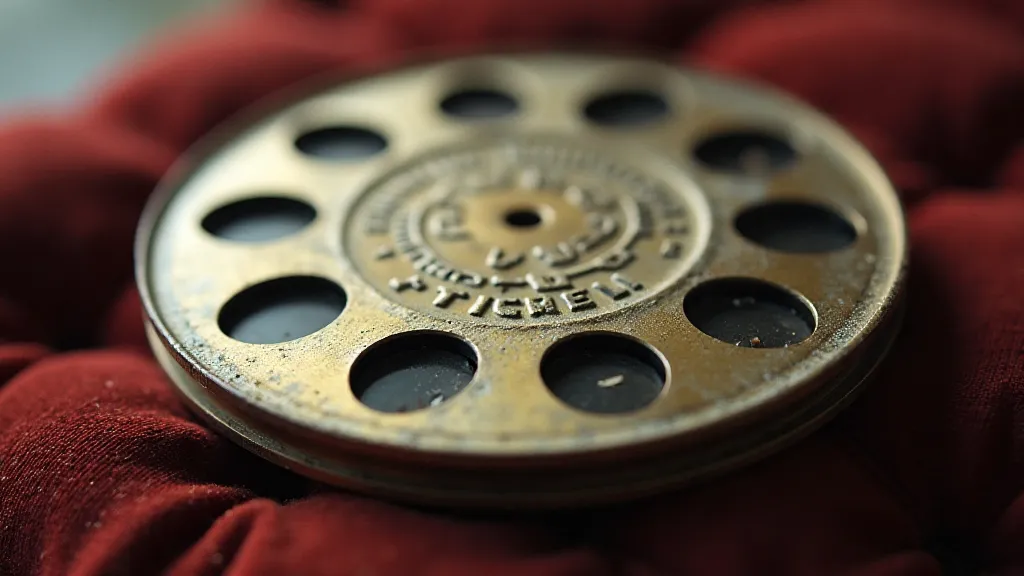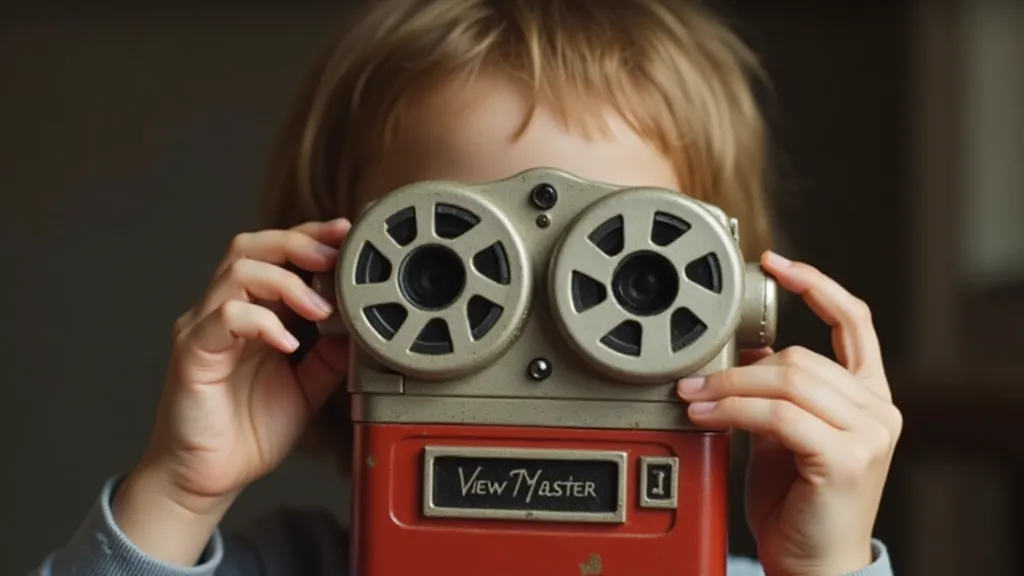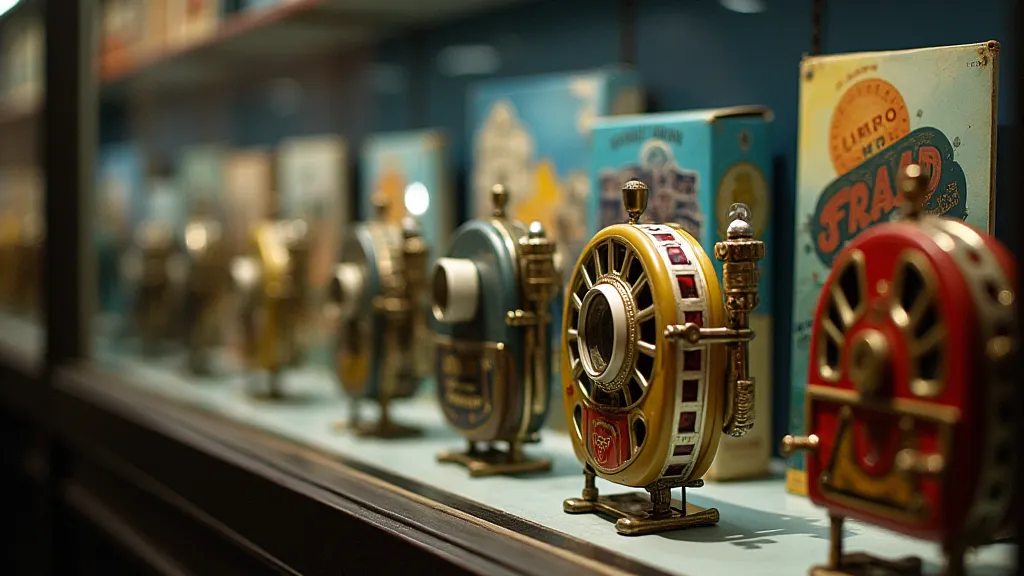The Curator’s Dilemma: Balancing Preservation and Accessibility
The scent of aged cardboard and celluloid. That’s the smell of history, the smell of my collection. For years, I’ve been immersed in the world of View-Master reels, those mesmerizing discs that transported generations to far-off places, showcasing wonders both real and imagined. It’s a passion rooted in a profound respect for the past, but also tempered by a constant, simmering ethical question: how do you share something precious without diminishing it?
My journey began, as so many do, with a childhood memory. My grandfather, a quiet man who rarely spoke of himself, possessed a View-Master. It wasn't a flashy model, just a simple, reliable device that whirred gently as he clicked through images of the Swiss Alps. Those fleeting glimpses of snow-capped peaks and charming villages sparked a yearning for adventure, a desire to experience the world beyond my small town. He rarely elaborated on where the reels came from, simply saying they were "from a time when things were different.” That simplicity, that reverence for the images themselves, has shaped my approach to collecting and, now, restoration.

The Weight of the Past
Restoring these reels isn't merely about cleaning dust or mending tears; it's about acknowledging the stories they hold. Each reel is a snapshot of a specific era, reflecting the prevailing tastes and aspirations of the time. Imagine the family gathered around the View-Master, sharing a moment of wonder. Consider the factories where these reels were manufactured, the skilled workers painstakingly assembling each image. Ignoring that historical context feels disrespectful, a denial of the human effort and ingenuity that brought these artifacts into existence.
The process itself is delicate. Many reels have suffered the ravages of time – brittle acetate, cracked frames, faded images. The temptation is to aggressively "fix" them, to return them to a pristine, factory-fresh condition. But that's precisely what I try to avoid. A perfectly restored reel, devoid of any trace of its history, feels… sterile. It loses the evidence of its journey, the whispers of the past. A tiny scratch on a frame? That's a story. A slight discoloration? That’s character.
The Conservation Spectrum
There’s a spectrum in restoration, a philosophical debate that rages amongst collectors and curators alike. On one end lies aggressive restoration, aiming for a flawless appearance. While appealing to some, this approach risks erasing authenticity. On the other end is a strict conservationist approach, leaving everything as is, even if it means the reel is difficult to view or heavily damaged. Neither extreme is ideal.
My own approach leans towards a mindful conservation. I focus on stabilizing the reel – repairing tears, gently cleaning the images, and ensuring the mechanism functions smoothly. Any repairs are done using archival-quality materials, easily identifiable as interventions. I never attempt to repaint faded images or replace missing frames. The goal is to preserve the reel’s integrity while allowing it to be enjoyed.
It's a constant balancing act. How much intervention is too much? Can I stabilize a severely damaged reel without compromising its historical significance? There are no easy answers. Each reel presents its own unique challenges, demanding a careful assessment of its condition and a thoughtful consideration of the ethical implications of any intervention.
Sharing the Wonder: The Accessibility Question
But preservation isn’t enough. A collection hidden away in a dark room serves no purpose. The true value of these View-Master reels lies in their ability to inspire, to educate, and to transport viewers to other worlds. Sharing them is a responsibility.
This is where the dilemma sharpens. How do I make these reels accessible to a wider audience without accelerating their deterioration? High-resolution scans are a possibility, allowing people to view the images digitally, but that removes the tactile experience, the feel of the mechanism in your hand, the subtle whir of the reels turning.

I'm experimenting with carefully curated displays, utilizing controlled environments to minimize light exposure and handling. I’m also developing detailed documentation, providing context and history alongside each reel. This allows viewers to appreciate not just the images, but also the story behind them.
Craftsmanship and the Passing of Skills
Beyond the images themselves, the craftsmanship of the View-Master is remarkable. The precision engineering required to manufacture these intricate devices is a testament to a bygone era of skilled labor. Many of the techniques used are no longer practiced, and the knowledge is slowly disappearing.
By restoring these reels, I’m not just preserving a piece of history; I’m also honoring the skills of the artisans who created them. I’m learning about the mechanics of the device, the materials used, and the techniques employed in its construction. This knowledge is invaluable, and I'm committed to sharing it with others, ensuring that these skills are not lost forever.
A Continuous Dialogue
The restoration of vintage View-Master reels is more than a hobby; it's a commitment to preserving a piece of cultural heritage. It’s a journey filled with challenges, ethical considerations, and moments of profound connection. It's a constant dialogue between the desire to protect and the urge to share.
And that's the heart of the curator’s dilemma: to find that delicate balance between preserving the past and making it accessible for future generations, ensuring that the wonder of the View-Master continues to inspire and educate for years to come.





